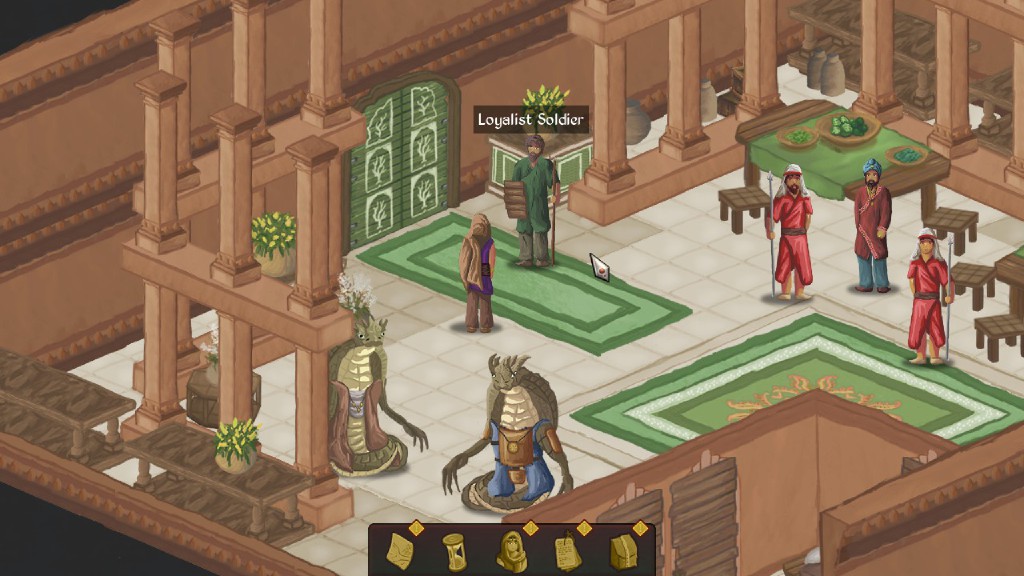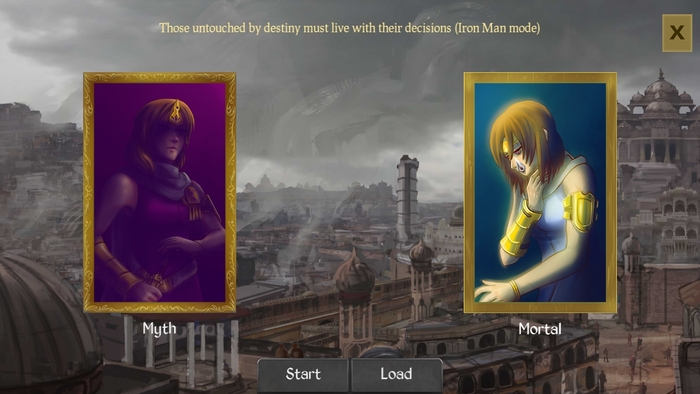Arvind Yadav is a resident of Jaipur, India, and head of the international development team Pyrodactyl Games. Arguably their best-known game is 2014's Unrest, a Kickstarter-funded RPG that shets light on the political turmoil in a fictional city which is both inspired by Indian history and mythology. In the summer of 2016, Pyrodactyl's latest game Good Robot was published, a shooter with roguelike elements.
DEEP-ROOTED GAMES: An Interview with Arvind Yadav (Pyrodactyl Games)
Could you tell me a bit more about Pyrodactyl Games? Your team seems to come from quite a few places. In what form do you do you work together, and how did you find each other?
We’re a group of people who met over the internet. I met them over the years and asked them to work with me. We work using online tools like bitbucket and google docs. We chat using hangouts, steam or skype depending on what’s needed.
Let’s talk about Unrest, then: Could you tell me how this game came to be and how you had the idea to create its setting? Pyrodactly Games obviously is eager to make games that are, to quote one of your titles, “atypical”. How much was the wish to do a “different” setting a point of motivation for Unrest?
I always wanted to make a game set in India due to not seeing any other games in the setting. After I had a couple of games under my belt, I felt the time was right to make Unrest.

Are there any books or works of art that you looked to for inspiration? And what kind of research did you do for the project?
I mainly drew upon the mythological books I had read as a kid, along with a style of storytelling similar to the The Wire.
Your setting is inspired by a specific historical, cultural and ethnical background. Since your team seems to be pretty diverse, it’s likely that not all of you were equally familiar with that background. Was this a problem when working on the game? Where there any special precautions you took not to fall into the trap of cultural misappropriation?
No, everyone was completely on board with the vision of the game. Every team member took their time to research the setting and contribute to the game in a meaningful way.
Did you feel like having to do extra work to make the setting accessible to players not familiar with the historical, cultural and ethnical background you’re drawing from for Unrest?
I don’t think Unrest needed too much of that work - fundamentally, the story is about a group of people struggling in a kingdom under political turmoil. I feel a lot of us can relate to that!
While Unrest’s setting is fictional and historical, fantastic elements are used rather sparingly. The Naga, one could say, are mostly a cipher for The Other. Did you at one point in the development think about shifting the setting further into the realm of the fantastic and use more mythological elements? What was your reason for choosing this half-way point between a fictional historical and fantastic setting?
There were both practical and creative reasons for wanted to keep the story grounded and keep the mythological elements to a minimum. Not having too many set pieces kept the game’s budget low, which was necessary - but allowing a light mythological touch meant we had to get creative and get the maximum use out of that.

What were your reasons for choosing the mythological figure of the Naga to represent The Other in the game?
The truth is, there’s no particular reason behind choosing the Naga instead of something else. I suppose I felt they were the ones that could be integrated while maintaining the serious tone of the game.
While doing my research for this piece, I came across an article arguing that Simogo’s Year Walk may have saved the tradition of Arsgang from slowly being forgotten entirely. The game would thus be participating in a tradition of passing down stories through the ages. Do you think that games should aspire to doing this? Do you maybe even think that the interactive form has a “special” potential when it comes to passing down such stories?
Yeah, games can aspire to do anything they want to. I think it is too early to tell if games have the longevity of other mediums, because we often find it very difficult to preserve old games once technology moves on.
Could you imagine returning for a future project to a setting that is inspired by history and mythology? What are your upcoming projects, anyway?
I’ll probably make another game set in India soon enough, although it probably won’t be related to the story of Unrest. We released Good Robot in 2016, and I'm working on plans for my next game (it involves a heist).
Thank you for your time!

